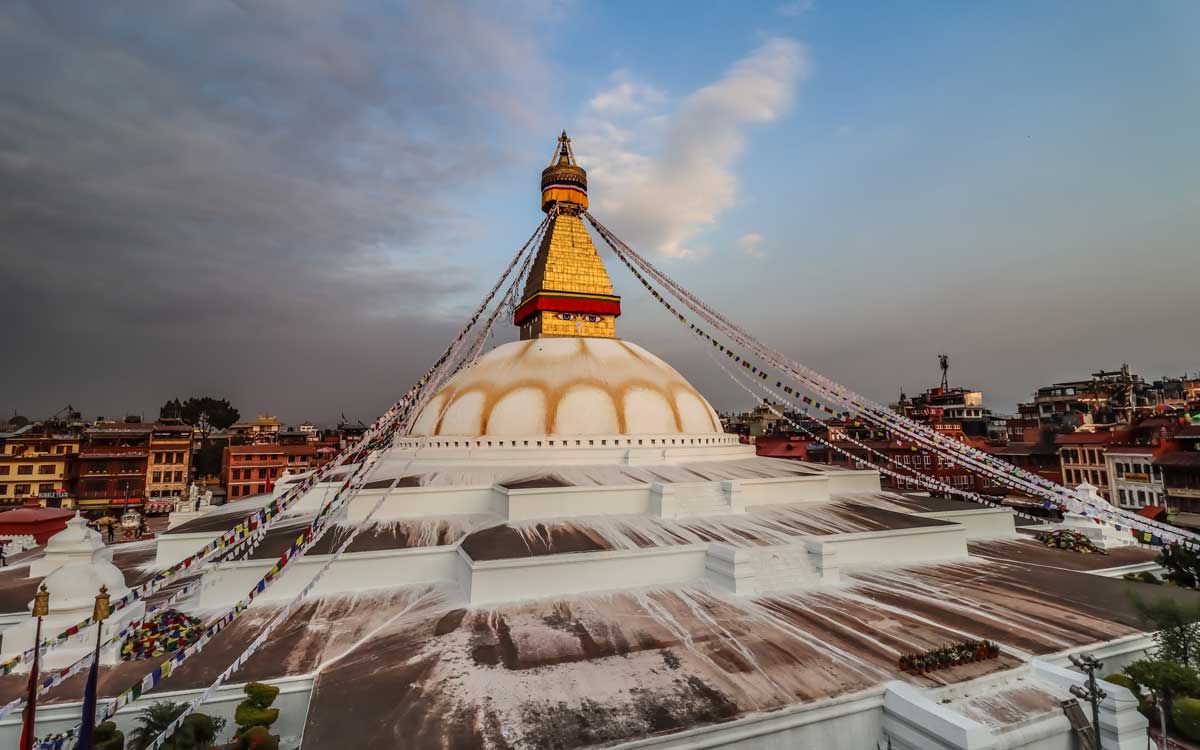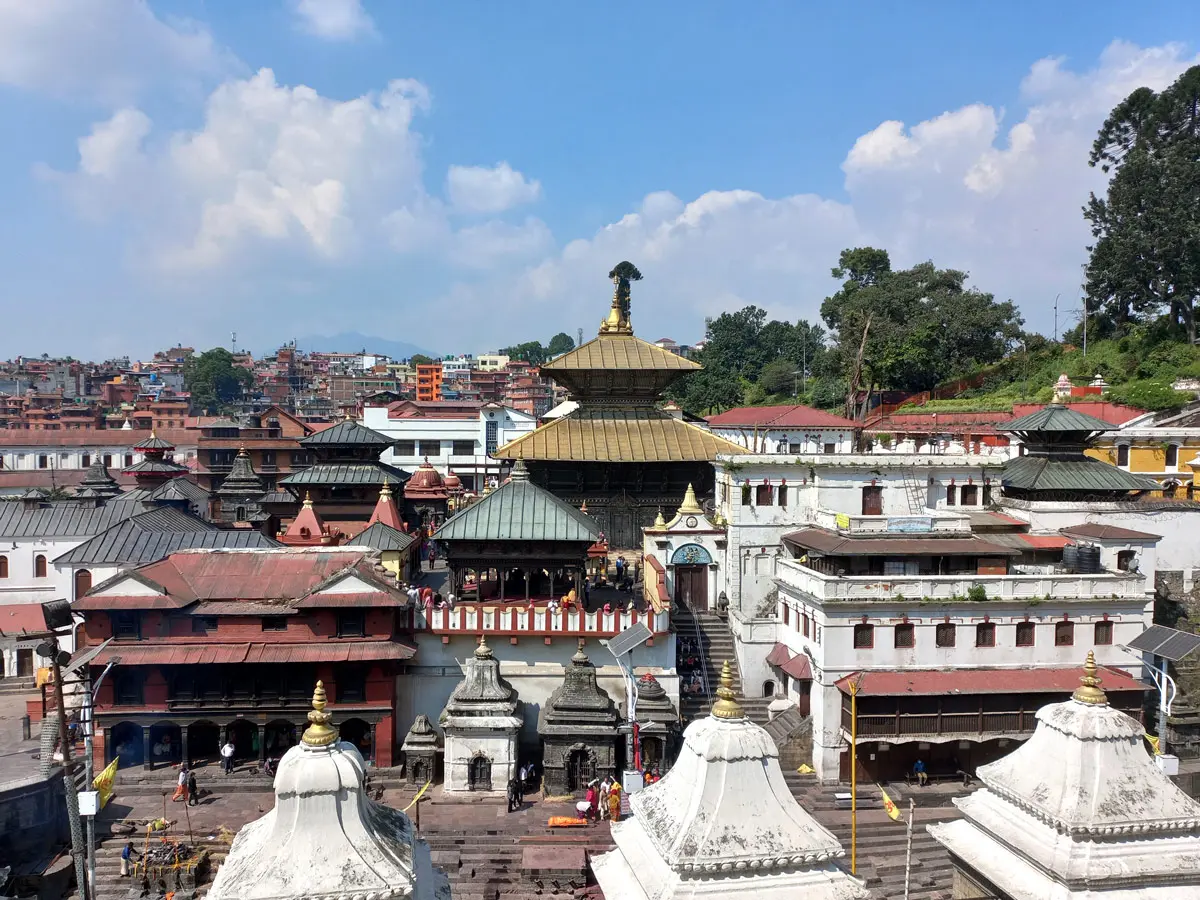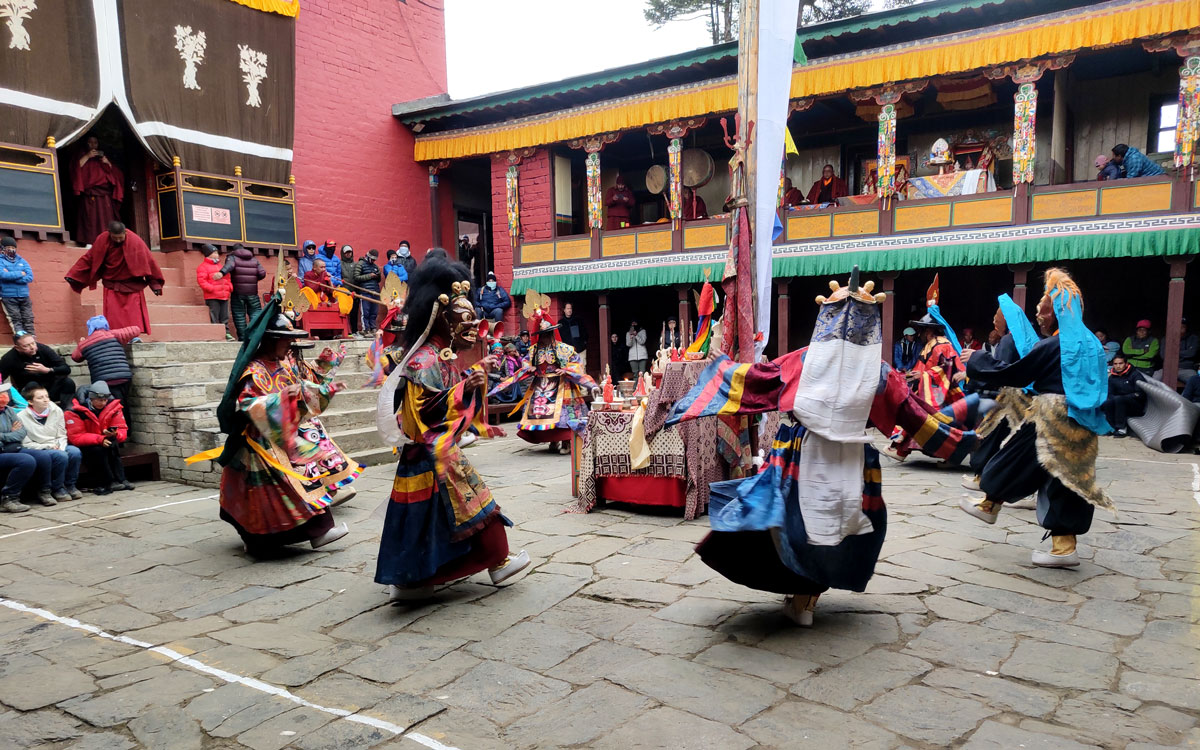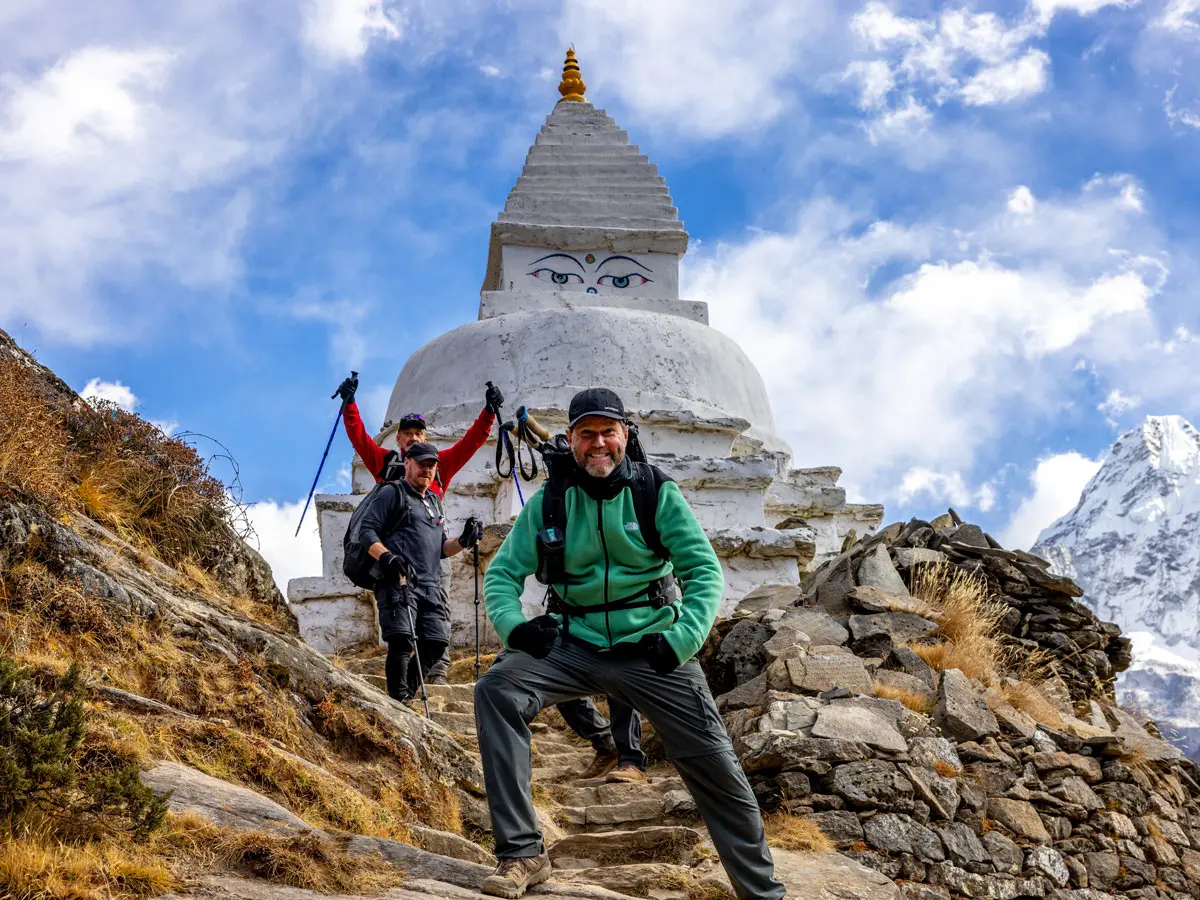A stupa in Nepal is said to represent the holy mind of Lord Buddha. Each step shows the way to enlightenment. Everyone knows about the “big eyes” but what do all the other parts mean? Let us see the architecture of Boudhanath Stupa from the top and what it symbolizes.
1. Pinnacle
This is the symbol of Mt. Sumeru which is the King of Mountains. The great “mountain above the mountains” lies at the center of the universe and believed as the home of gods.
2. Umbrella
Umbrella is considered to be the protector of three jewels; Buddha, Dharma and Sangha. Just above the umbrella lies a glided canopy said to represent the air.
3. Lotus
Lotus symbolizes self-development, enlightenment and purity because it is rooted in the mud, grows from dirty water and without getting dirty emerges as a symbol of beauty. It represents enlightened beings such as Buddha himself and Bodhisattvas.
4. Thirteen Steps
The thirteen steps symbolize the thirteen states of Bodhisattva’s ground for the enlightenment or “Bodhi” hence the name of the stupa. The triangular shape represents fire.
5. Two Big Eyes
In the stupa, there are giant pairs of eyes looking out from the four sides of the main tower. These are the Buddha eyes and the wisdom eyes. The eyes of the Buddha in the stupa symbolize the all-seeing ability of the Buddha.
6. Nose
Nose symbolizes Nirvana. It is also said to represent the Nepali character for the number 1, symbolizing unity and the one way to reach enlightenment.
7. Harmika
Harmika symbolizes the eight noble path. The eight noble path includes:
- Right view
- Right thought
- Right speech
- Right action
- Right livelihood
- Right endeavor
- Right mindfulness
- Right meditative concentration
8. Prayer Flags
Prayer flags tied to the stupa flutter in the wind, and is believed that they carry mantras and prayers heavenward. The prayer flags have 5 colors with significance of each.
- White color symbolizes purity, primordial being
- Green color symbolizes peace, protection from harm
- Yellow color symbolizes beauty, wealth
- Blue color symbolizes knowledge, awakening/enlightenment
- Red color symbolizes love, compassion
9. Dome
The dome is the symbol of universe or vase of the treasure Mandala. It contains of the jewels of enlightenment, the water of eternity and votive offerings to the deities.
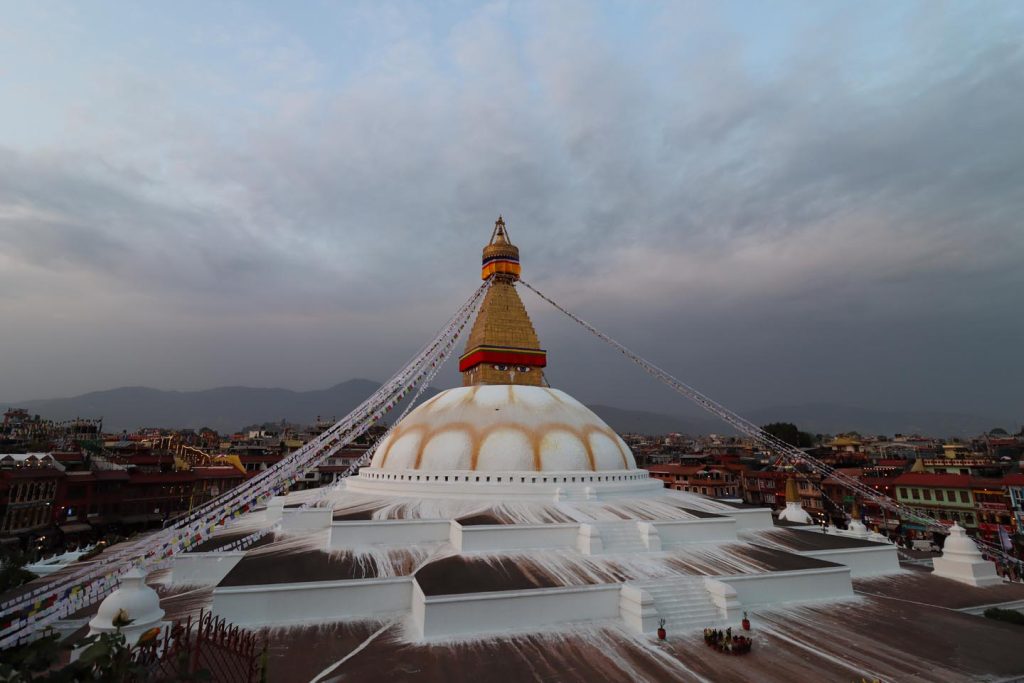
10. Mandala
The square Mandala depicts earthly levels. The mandala is represented as an external expression to help find the universe within. Often, the mandala incorporates symbols or physical representations of the Buddha to show the transition of the spiritual journey. Thus it is considered as the mansion of Lord Buddha.
11. Two Circular Plinths
The 2 circular plinths supporting the hemisphere of the stupa just below the dome above the platforms represents water.
12. Three Decreasing Platforms
The base of the stupa consists of three large platforms, decreasing in size. These platforms symbolize Earth, and from here you can look out at the mountains while listening to the chants of the devotees doing kora which is walking around the stupa praying.
13. The Dhyani Buddhas
Four of the Dhyani Buddhas mark the cardinal points as in all Tibetan mandalas, with the fifth, Vairocana, enshrined in the center (in the white hemisphere of the stupa). The five Buddhas also represent the five elements (earth, water, fire, air and space/ether), which are represented in the stupa’s architecture.
So, if you visit Boudhanath Stupa, do not forget to give a close glance on all these parts once again.
